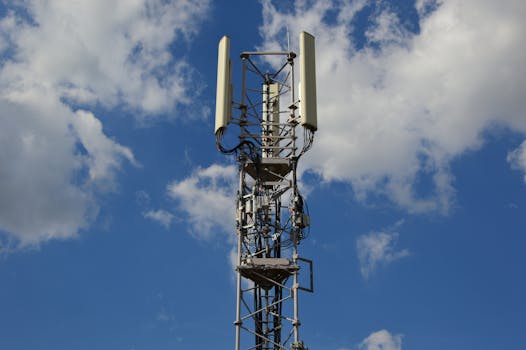
GEO satellites, or Geostationary satellites, are a type of satellite that orbits the Earth at an altitude of approximately 36,000 kilometers, remaining stationary relative to a fixed point on the planet. The Focus Keyword: GEO satellites have been a cornerstone of modern telecommunications and navigation, providing a wide range of services that are essential to our daily lives.
One of the primary functions of GEO satellites is to facilitate television broadcasting. These satellites receive signals from earth-based stations and rebroadcast them to a wide audience, allowing people to access a vast array of channels and programs. In addition to television broadcasting, GEO satellites also provide internet connectivity to remote and underserved areas, where traditional internet infrastructure is lacking.
GEO satellites are also used for navigation purposes, such as GPS (Global Positioning System) and other satellite-based navigation systems. These systems rely on a network of satellites orbiting the Earth to provide location information and timing signals to receivers on the ground, allowing users to determine their precise location and velocity.
In addition to these services, GEO satellites are also used for weather forecasting, earth observation, and scientific research. They provide valuable data on weather patterns, climate change, and natural disasters, which is used to inform decision-making and policy development.
The use of GEO satellites has numerous benefits, including global coverage, high bandwidth, and reliability. They can provide services to a wide audience, regardless of geographical location, and are less susceptible to interference and signal degradation compared to other types of satellites.
However, the use of GEO satellites also poses some challenges, such as orbital congestion and space debris. The increasing number of satellites in orbit has raised concerns about the risk of collisions and the potential for space debris to cause damage to operational satellites.
In recent years, there has been a growing trend towards the development of new satellite technologies, such as Low Earth Orbit (LEO) satellites and Medium Earth Orbit (MEO) satellites. These satellites offer improved performance and capabilities compared to traditional GEO satellites and are expected to play a major role in the future of telecommunications and navigation.
In conclusion, GEO satellites have been a cornerstone of modern telecommunications and navigation, providing essential services such as television broadcasting, internet connectivity, and location tracking. While they pose some challenges, such as orbital congestion and space debris, their benefits, including global coverage, high bandwidth, and reliability, make them an indispensable part of our daily lives.
The future of GEO satellites is likely to be shaped by advances in technology and the growing demand for satellite-based services. As the world becomes increasingly dependent on satellite technology, it is essential to ensure that these systems are developed and used in a sustainable and responsible manner.
Another critical aspect of GEO satellites is their launch and operation. The launch of a GEO satellite is a complex and expensive process, requiring significant resources and expertise. Once in orbit, the satellite must be operated and maintained to ensure that it continues to provide reliable services.
The economic benefits of GEO satellites are also significant. They provide a wide range of services that are essential to many industries, including telecommunications, navigation, and weather forecasting. The revenue generated by GEO satellites is substantial, with the global satellite industry estimated to be worth billions of dollars.
In terms of regulation and policy, GEO satellites are subject to a range of international and national laws and regulations. These regulations govern the use of satellite technology, including the allocation of orbital slots and the prevention of interference between satellites.
Finally, the environmental impact of GEO satellites is a growing concern. The increasing number of satellites in orbit has raised concerns about the potential for space debris and the impact of satellite launches on the environment.
In the section of future developments, it is worth noting that the use of GEO satellites is likely to continue to evolve in the coming years. Advances in technology, such as the development of new satellite materials and propulsion systems, will enable the creation of more efficient and effective satellites.
The use of artificial intelligence and machine learning is also expected to play a major role in the future of GEO satellites. These technologies will enable satellites to operate more autonomously, making decisions and adjusting their operations in real-time.
In conclusion, GEO satellites are a vital part of modern telecommunications and navigation, providing essential services such as television broadcasting, internet connectivity, and location tracking. While they pose some challenges, their benefits make them an indispensable part of our daily lives.



